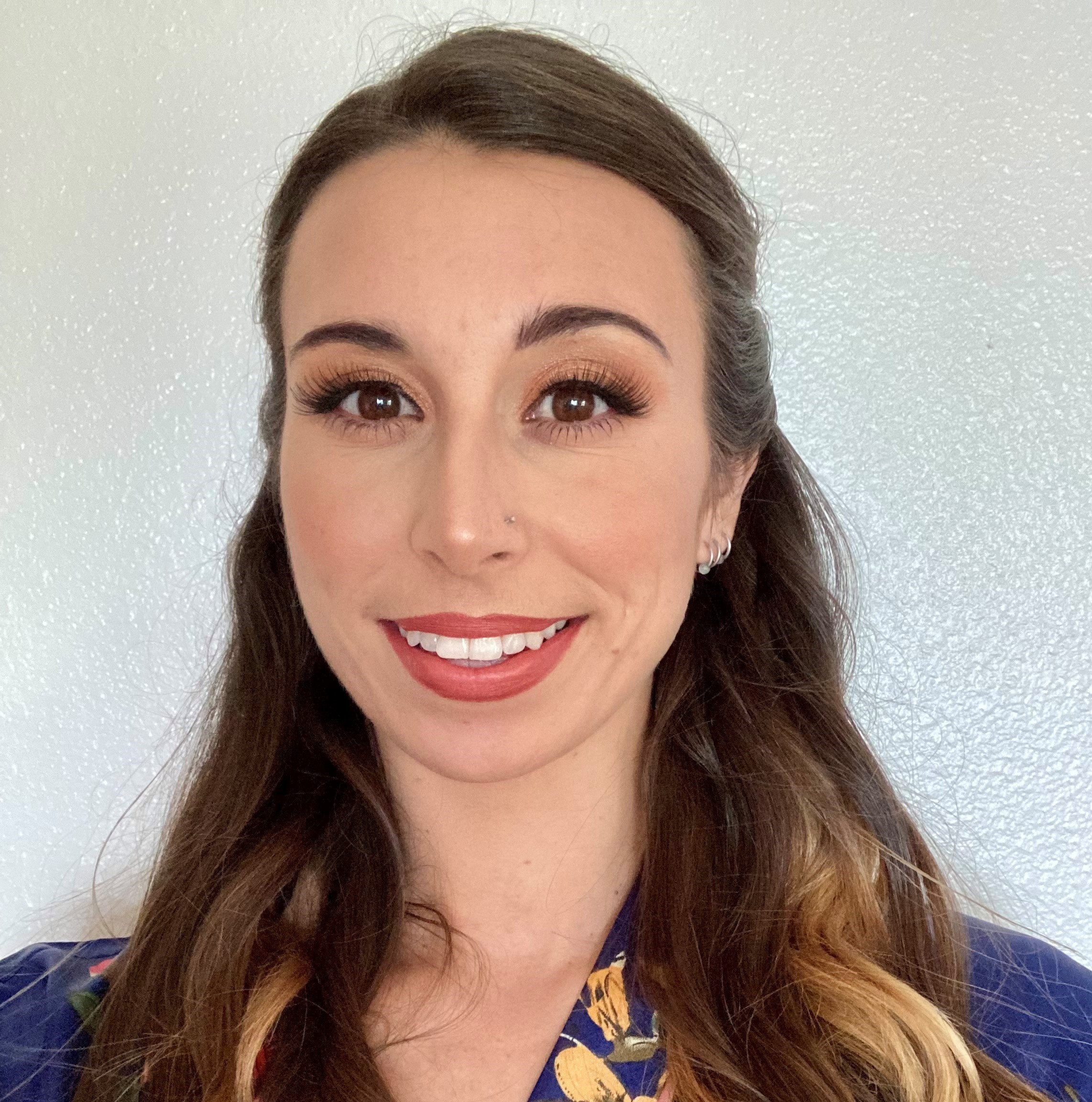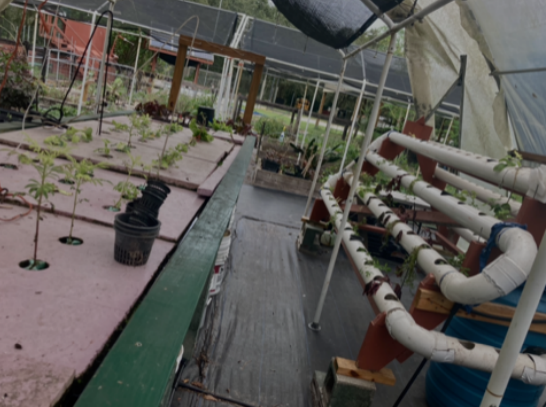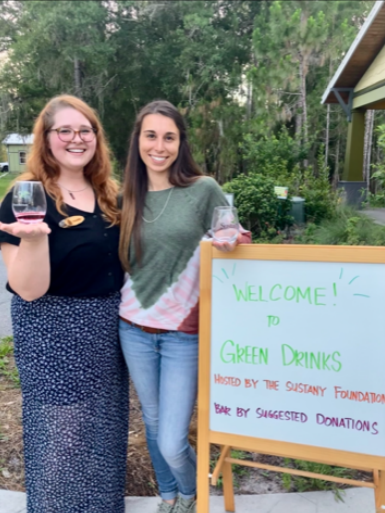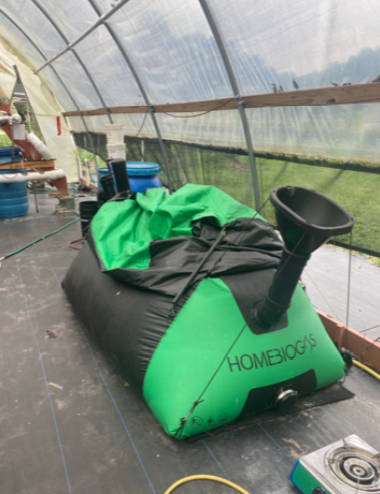
Kristi Strazzullo
Class of '22
Age: 30
Tell us about your key career focus in 2023, and how that ties in with your original goals in the field of sustainability:
When I first started at PCGS all I wanted to do was plant trees, but the more I learned about trees and forests, the more they taught me the importance of community and cooperation. In 2023, I became the Director of Sustainability Programs at The Sustany Foundation, a nonprofit that aims to enhance the quality of life of Tampa Bay Communities by promoting sustainability. My key career focus has been gaining program/project management experience while forging strategic relationships with other nonprofits, sustainability professionals, businesses, municipalities, community partners and stakeholders to position the organization for highly impactful program development. Using community engagement as a catalyst for sustainability, I’m currently working to develop/expand the Tampa Bay Annual Sustainable Business Awards, a zero waste event certification program, and a carbon offset program that focuses on restoring native habitats, which sequester carbon while providing vital ecosystem services for Tampa Bay residents. I’m very excited for the chance to work with Tampa Bay Regional Planning Council and USF as a community engagement consultant for an EPA Climate Pollution Reduction Grant- helping to develop the Priority Climate Action Plan by engaging disadvantaged communities in Hillsborough, Pinellas, Pasco, and Hernando counties and facilitating community driven solutions. I’m also looking forward to opportunities for Sustany to assist other organizations with projects, such as the Coalition of Community Gardens’ Annual Grow Gardens Conference and Gasparilla Festival of the Arts Sustainability Committee.
Describe your most rewarding accomplishment in sustainability since graduating from PCGS in 2022:

Building on the success of Sustany’s Annual Sustainable Business Awards, I managed to establish a partnership between the Sustany Foundation and the USF Patel College of Global Sustainability, with the goal of expanding our annual awards event to a year-round sustainable business program. The opportunity to meet with our PCGS Dean Parayil and collaborate with PCGS Sustainable Business Director, Dr. Haldar and other former professors has been a very rewarding experience. Together we’ve created the framework for the Coalition of Excellence for Business Sustainability (CEBS), a joint program designed to support the growth and profitability of sustainable business ecosystems in Tampa Bay and throughout Florida. We applied for an EPA Pollution Prevention grant, further developing Florida’s Pollution Prevention Initiative to focus on the impacts to disadvantaged communities and address GHG reduction and pollution prevention from various nonpoint sources. By engaging with businesses in both the chemical and food and beverage industries, as well as their neighbors/stakeholders, we aim to foster more vibrant, resilient, and healthy communities that are not only prepared for the impacts of climate change, but equipped to flourish under changing environmental and economic conditions. Once launched In November, I will be the acting CEBS Liaison to help facilitate the creation and funding of sustainable business training programs, outreach campaigns, internships, and consulting services. Working with PCGS program directors, key Sustany Foundation members, and local business partners to establish an alliance of businesses and municipalities implementing climate action and pollution prevention plans, with the goal of cultivating highly profitable, efficient, and beneficial sustainable business and industrial ecosystems throughout the state.
How did your preparation at PCGS help you in your current efforts in the field?

My Concentration in Climate Mitigation and Adaptation prepared me to be a systems thinker who can confidently provide consulting across a wide range of sustainability topics including:
- Biological carbon sequestration (especially ecosystem restoration/preservation, and including regenerative agriculture, agroforestry, soil regeneration, emerging blue carbon ventures, etc.)
- Preserving and utilizing ecosystem services (protecting key provisioning, regulating, cultural, and supporting ecosystems services, and using biomimicry to inform solutions like environmental management and landscape design for flood control, creating pollinator habitats, or using wetland plants for wastewater treatment, etc.)
- Systems ecology and the interaction/impacts of human-nature systems
- Waste reduction, circular economic practices, cradle-to-cradle design, and sustainable materials
- Carbon footprint assessment, comprehensive GHG emissions reductions, and nonpoint source pollution prevention
- Building/energy efficiency and available renewable power options, especially solar and biogas, that can reduce facility operational costs while improving sustainability and resiliency.
- Sustainable development (organizational / infrastructure) and community resiliency My experience at the Rosebud Continuum working with different kinds of biodigesters, composters, and innovative methods for processing or repurposing various forms of waste was instrumental for my current zero waste efforts in the community. The awareness I gained about the impacts of waste was a major driver for further developing Sustany’s zero waste certification program, targeted toward assisting major events and facilities in Tampa Bay to reduce their impacts and eventually eliminate waste streams altogether. A result of my time at Rosebud is being able to catalog all materials used in an event or business facility, assess/minimize the carbon footprint from production, categorize the different sources/types of waste, and identify positive uses for them in the community- from upcycling to composting or waste to energy options. Participating in the USF Solar Feasibility Study as part of my Economics and Finance for Sustainability Course Collaboration introduced me to the world of sustainable business. I worked with Dr. Pradeep Haldar, Hillsborough and Pinellas county contacts, utilities employees, and other graduate students to assess the solar capacity and associated costs/savings of a combination of ground mounted, rooftop, carport, and floating PV solar installations at various utilities departments, solid waste stations, administrative offices, communications buildings, and other county sites. My team successfully completed a cost benefit analysis and in depth case studies for the DAS Department Communications Building and PCJC New Infrastructure Building in Pinellas County. Results and solar array recommendations were presented in a virtual meeting with Hillsborough and Pinellas County coordinators. Describe your future career plans for growth in the area of sustainability: Our work with Tampa Bay Regional Planning Council and USF on the EPA Climate Pollution Reduction Grant program will be ongoing for the next four years. The Sustany team and I will provide educational engagement opportunities and facilitate inclusive conversations in communities impacted by GHG emissions or other pollution. This community engagement will help establish GHG emissions reduction goals and dates set by the EPA. I love the spirit of creating “community driven solutions” and I would like to do more projects like this in the future.
Describe how your previous work as a wetland restoration scientist informed your current work at the Sustany Foundation:
My work as a wetland restoration scientist was the inspiration for studying methods of climate mitigation that seek to measure and utilize natural carbon sinks, such as wetlands, forests, grasslands, peatlands, blue carbon, agricultural land, and even the soil. The idea is that since these ecosystems are also critical for global biodiversity and provide vital ecosystem services for humans, they should be preserved and restored as much as possible in our effort to reduce atmospheric GHG concentrations. We can also apply what we learn from natural systems to human systems, and adapt or modify certain practices to maximize carbon storage and emissions reductions. Now instead of simply planting trees, I look for opportunities to plan carbon offset projects that protect and restore native ecosystems, such as wetlands and longleaf pine forests, or support regenerative agriculture practices, community gardening initiatives, and urban greening projects. The impact of the chemical glyphosate on my health and the knowledge of the extent to which it is sprayed into Florida’s wetlands and surrounding ecosystems (in addition to agricultural land) each year was another motivation for me to research more sustainable land management and agricultural practices. That’s one reason why I love working on the Annual Grow Gardens Conference and seeing the shift toward sustainable food systems. Eventually, I’d like to create a program or think-tank to again facilitate community driven solutions and help land managers find alternatives to using glyphosate for controlling invasive plant species in Florida.
What motivated you to start working and to continue working in the field of sustainability?

As an undergraduate at USF, I visited Sequoia National Forest for my final project where I studied the impact of global warming on sequoia groves. Being able to touch what may become some of the last old growth sequoias on Earth (if warming/precipitation patterns continue and new groves aren’t established) gave me a deep sense of connection and responsibility to all life on Earth.
What is your advice to young students studying sustainability today?
- Observe the forest, the trees teach us how to work and live together.
- Cooperation over competition- this is a cornerstone of sustainability.
- Poor mental or physical health is a sign that something isn’t sustainable
- Learn to recognize the signs in yourself and your community, be willing to do what’s necessary to address it, have an open mind and be creative when coming up with solutions, and exciting opportunities are bound to appear.
- Join a nonprofit like Sustany and expand your network!